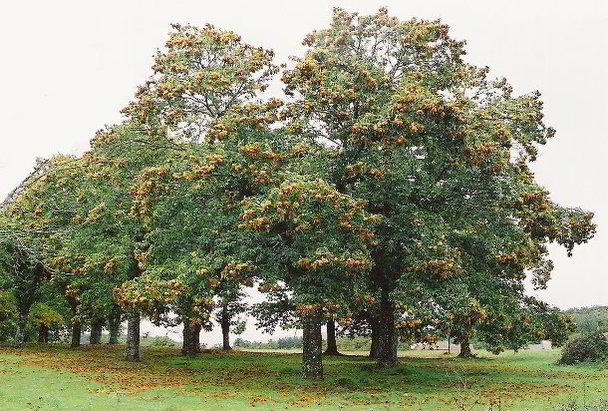Researchers are currently seeking approval to release fertile, genetically engineered American chestnuts into natural forests.

While scientists envision a future of forests filled with genetically modified trees on one hand, some observers, on the other hand, however fear that approving the plan would set “a disastrous precedent”.
The observers, who are basically activists, insist that it is erroneous to “restore” a natural ecosystem with designer trees.
If the scientists’ dreams become a reality, the American chestnut tree would be the first genetically engineered tree species to be approved in the United States and the first fertile GMO plant to be released into a natural ecosystem.
The implication, according to the Germany-based not-for-profit, Rainforest Rescue, is that future GMO plants could then be approved with little to prevent their uncontrollable spread.
In a petition addressed to the US Department of Agriculture – Animal Plant Health Inspection Service (USDA APHIS), in respect of which the group is seeking signatories, Bettina Behrend and Marianne Klute of Rainforest Rescue stressed that corporations and researchers have been seeking permits for GMO trees in industrial plantations for years, but that the overwhelming public rejection of genetic engineering has so far prevented them from going ahead.
“They now want to bypass the public’s distrust by using the Trojan horse of ‘forest restoration’. However, you cannot ‘restore’ a natural ecosystem with designer trees,” the pair wrote.
The added: “No long-term studies are available on the ecological and social risks of genetically modified American chestnuts in forests. Indigenous peoples, First Nations, cities, counties, and farmers who want to remain GMO-free would be at risk. The sovereignty of indigenous peoples would be violated, and the livelihood of chestnut farmers threatened. The unintended consequences are truly unforeseeable.”
Describing the development as a “dangerous experiment with our environment”, Rainforest Rescue added: “The American chestnut (Castanea dentata) was one of the most common forest trees in the eastern United States and Canada until the first half of the 20th century, when the chestnut blight (Cryphonectria parasitica), a parasitic fungus, almost completely wiped it out. Asian chestnut species are immune to the blight, but their American cousins are not.
“According to a recent study, around 450 pests that damage or feed on trees have been introduced to US forests due to the growth in international trade and travel. It would be impossible to fight all these threats using genetic engineering.
“The College of Environmental Science and Forestry at the State University of New York (SUNY ESF) in Syracuse has been working on genetically manipulated American chestnuts for around 30 years. Dr. William Powell and Dr. Chuck Maynard inserted a sequence from the wheat genome into chestnuts, causing it to produce the enzyme oxalate oxidase. This neutralises the oxalic acid of the fungi.
“The genetically engineered trees would not stop at the US border but would also spread to eastern Canada.
“The research and development of the GMO chestnut was funded by companies such as ArborGen, Monsanto (now Bayer) and Duke Energy.
“The US Department of Agriculture (USDA) and the Environmental Protection Agency (EPA) are responsible for ensuring the safety of this tree before it is planted in forests. Neither authority has any experience in this. The National Academies of Science, Engineering and Medicine has issued a warning to this effect in its 2019 Forest Health and Biotechnology report. Meanwhile, the USDA has funded researchers to permit them to conduct risk assessments of their own trees.”
